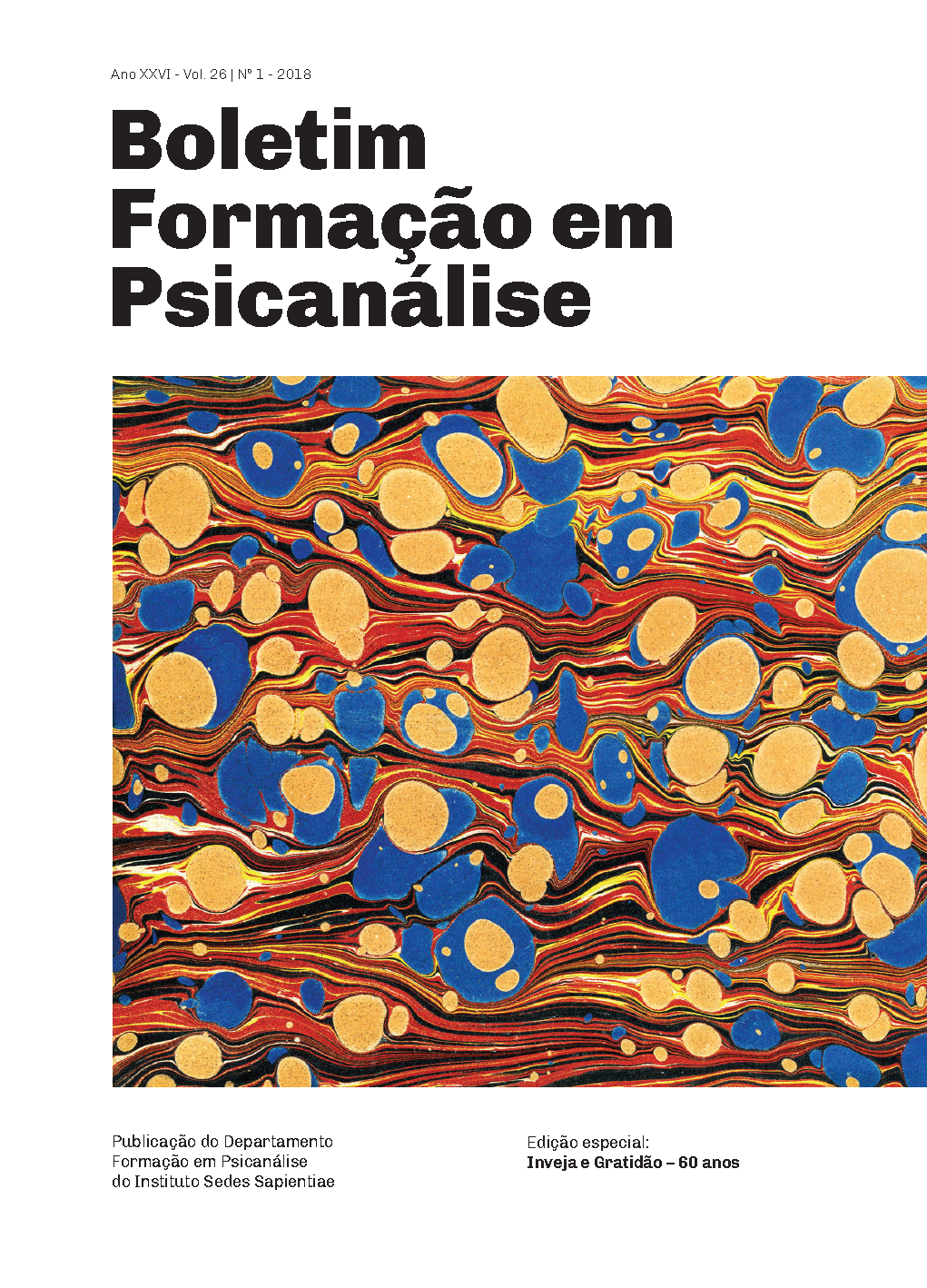Voracity and Envy
a few considerations about archaic mental life
DOI:
https://doi.org/10.56073/bolformempsic.v26i1.39Keywords:
Voracity, Envy, Children´s stories, Melanie KleinAbstract
This paper aims to revisit the concept of voracity in the work of Melanie Klein, establishing differences and relations with the concept of envy presented by the author. Such concepts will be illustrated by excerpts from two children's stories, "John and Mary" and "Snow White and the Seven Dwarfs." It is a reflection that had as its starting point the second theoretical / clinical Seminar held at the event "Melanie Klein: envy and gratitude 60 years", in which I presented a clinical case that was commented by Luiz Tenório Oliveira Lima. Voracity, of an oral nature, is inherent in the first desires directed to the object. It arises when the destructive impulses are reinforced, due to the privations from internal or external sources (experiences of frustration). Voracity is an impetuous and insatiable eagerness to dig and devour the object. Envy, on the other hand, is the angry feeling that the other possesses something desirable, and the envious impulse to take away this something or to Voracidade e inveja: algumas considerações sobre a vida mental arcaica Voracity and Envy: a few considerations about archaic mental life. Talita Cristina Somensi Dias Voracidade e Inveja: Algumas considerações sobre a vida mental arcaica Talita Cristina Somensi Dias Artigos 90 spoil it. Despite establishing differences between concepts, Klein (1957) points to the existence of an intimate connection between envy and voracity. It should be remembered that the overly envious person is also insatiable and that envy is equally directed to the first object, but with the purpose of wreaking havoc. Both (voracity and envy as corollaries of destructive impulses) can disturb the first relation with the object and make it difficult to establish the most primordial identifications and, later, the establishment of the depressive position. In this way, both envy and voracity are present in the first relation to the object and both, when excessive, hinder the primary processes of introjection, as well as may hinder the establishment of good internal object and identification processes. While voracity, in its craving for nourishment, empties the object, envy that can also be insatiable wreaks havoc and damages it. Both are expressions of archaic mental life, widely worked developed by Melanie Klein and serve as important operators of current clinical thinking.
Downloads
References
FERRO, A. Na sala de análise: emoções, relatos, transformações. Rio de Janeiro: Imago, 1998. 252p.
KLEIN, M. (1952) Algumas conclusões teóricas relativas à vida emocional do bebê. In: Inveja e gratidão e outros trabalhos (1946-1963). Rio de Janeiro: Imago, 2006. p. 85-118.
______. (1957) Inveja e gratidão. In: Inveja e gratidão e outros trabalhos (1946-1963). Rio de Janeiro: Imago, 2006. p.205-267.
______. (1958) Sobre o desenvolvimento do funcionamento mental. In: Inveja e gratidão e outros trabalhos (1946-1963). Rio de Janeiro: Imago, 2006. p.268-279.
MARRACCINI, E.M. Klein: Legado e contemporaneidade. In: Boletim formação em psicanálise. Ano XXV, v.25, p. 153-157, jan/dez. 2017.
SPILLIUS, E.B. Uma visão da evolução clínica kleiniana: da antropologia à psicanálise. Rio de Janeiro: Imago, 2007.368p.
Downloads
Published
How to Cite
Issue
Section
License
Copyright (c) 2022 Talita Cristina Somensi Dias

This work is licensed under a Creative Commons Attribution 4.0 International License.
Esta licença permite que outros distribuam, remixem, adaptem e desenvolvam seu trabalho, mesmo comercialmente, devendo informar a publicação inicial nesta revista.






